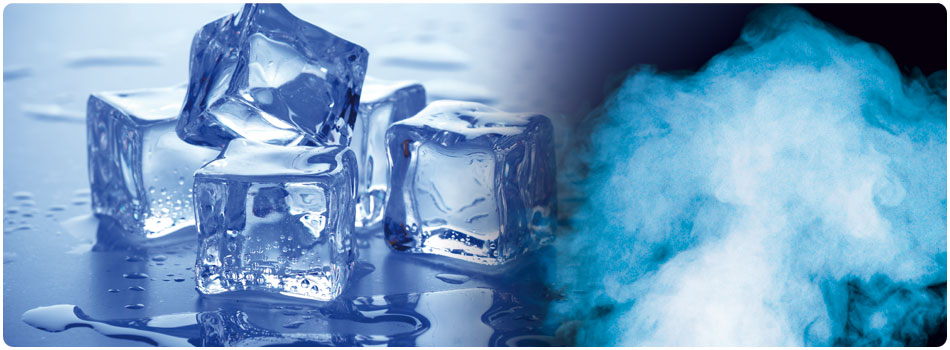Making it cold (and hot)

The process that refrigeration is based on (also see "WHAT'S REFRIGERATION?") should be considered as cooling the air inside a compartment containing food or other products, achieved through transfer of energy from such air to another fluid.
The transfer of energy between two fluids or bodies that come into contact with one another increases as the temperature difference between them increases. Likewise, significantly more energy is transferred if one of the fluids changes state.
States of substances
Substances occur in nature in three different states or phases, solid, liquid and gas, depending on their present temperature and pressure conditions.
The different states of substances are determined by the relative distance between molecules and consequently their cohesive force. The greater the distance (i.e. gas) the lower the cohesive force.
A substance that changes to a state with lower cohesive force requires a considerable amount of energy from the surrounding environment, called "latent heat", to break the bonds between molecules. Otherwise it gives up energy by forming stronger bonds.
Taking the case, for example, of phase change from liquid to gas, called evaporation, energy is required from the surrounding environment, which is consequently cooled.
Energy is transferred in three different ways:
- radiation: transmission of heat via infrared waves;
- conduction: transmission of heat via solid bodies, the molecules in such body transmit thermal energy from the hot point to all other parts of the body or other bodies in contact with this;
- convection: transmission of heat that's typical of fluids (liquids or gases), the molecules in the fluid are a state of agitation, and migrate through the environment containing the fluid, thus generating so-called "convective motion".
The design of refrigeration equipment exploits the evaporation of a fluid, i.e. the refrigerant.
This has involved, over the last century or so, the design, development and optimisation of the "vapour compression refrigeration cycle", a closed circuit containing refrigerant moved by a compressor and that evaporates in a heat exchanger in contact with air on the outside.
Once the air has been cooled, it flows into the food storage compartment.
Energy is therefore transferred by conduction via the pipes making up the heat exchanger - usually copper - between the evaporating refrigerant and the air outside, as well as by convection of the air that's often forced by fans into the compartment being cooled.
For details on how pressure and temperature play a fundamental role in refrigeration processes, see "PRESSURE & TEMPERATURE".
